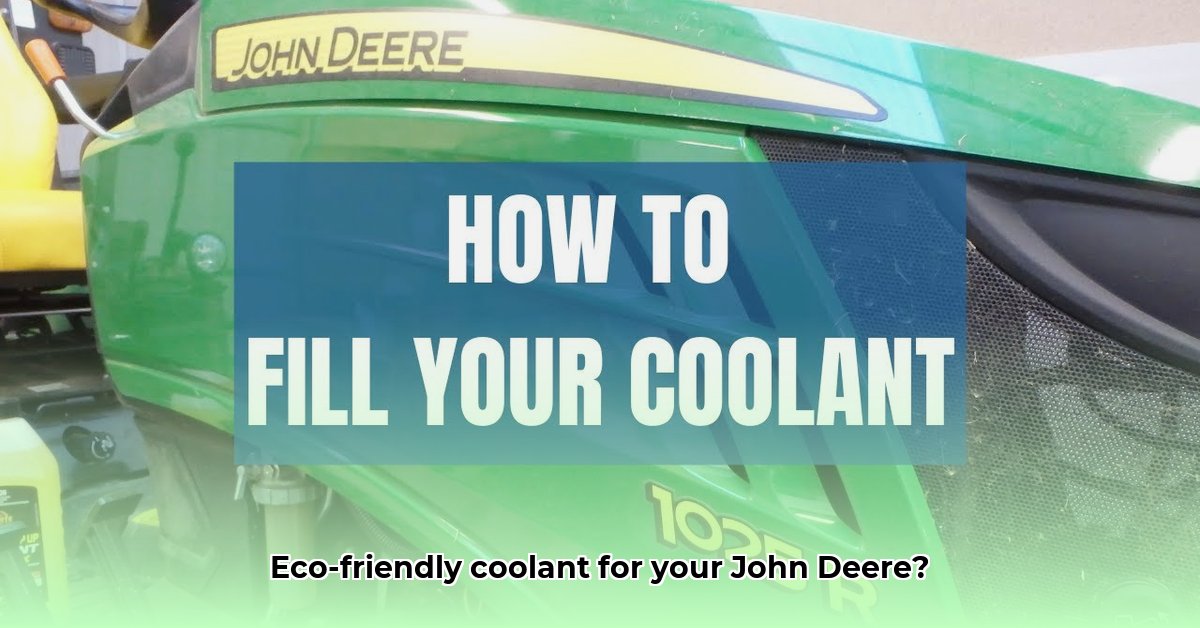
Coolant Choices for John Deere Tractors: Balancing Performance and Sustainability
Choosing the right coolant for your John Deere tractor requires careful consideration of both performance and environmental impact. This article analyzes John Deere's Cool-Gard II, examining its features, sustainability profile, and implications for various stakeholders. We will also explore alternative coolants and future trends in tractor coolant technology. For more information on John Deere tractor models, check out this helpful resource: John Deere Tractor Numbers.
Understanding John Deere Cool-Gard II and its Alternatives
John Deere's Cool-Gard II coolant boasts an extended lifespan—up to six years or 6,000 hours—reducing the frequency of coolant changes and minimizing waste. However, the standard formulation utilizes ethylene glycol, a toxic substance requiring careful handling and proper disposal to avoid environmental harm. A more sustainable alternative is Cool-Gard II with propylene glycol (PG), which offers similar performance with significantly reduced toxicity and a more favorable environmental profile.
Sustainability Analysis: A Comparative Look
While the extended lifespan of Cool-Gard II contributes to reduced waste, the environmental impact of ethylene glycol remains a key concern. Improper disposal of ethylene glycol-based coolants can lead to significant water contamination and soil pollution. The propylene glycol version mitigates these risks considerably due to its lower toxicity and higher biodegradability. However, the PG version might have higher initial costs and may not be as widely available as its ethylene glycol counterpart. This necessitates a careful cost-benefit analysis considering both short-term expenses and long-term environmental implications. Does the higher upfront cost of the propylene glycol version outweigh the long-term environmental benefits and reduced risk of costly engine damage from improper coolant?
Stakeholder Impact: A Multifaceted Perspective
The choice of coolant affects multiple stakeholders differently:
| Stakeholder | Short-Term Concerns | Long-Term Concerns |
|---|---|---|
| Farmers | Cost; ease of access; safety during handling and disposal | Total cost of ownership; long-term environmental impact; legacy for future generations |
| John Deere | Product development and marketing; responsible disposal guidance | Ongoing research into sustainable coolants; development of robust recycling programs |
| Government Agencies | Setting and enforcing responsible disposal regulations | Promoting incentives for using eco-friendly coolants; improving recycling infrastructure |
| Environmental Groups | Advocating for reduced toxicity; pushing for safer alternatives | Promoting awareness of responsible practices; pushing for stricter regulations |
Future Considerations: Innovation and Regulation
The future of tractor coolants will likely involve increased focus on recycling programs and the development of entirely new, more environmentally friendly formulations. Regulatory changes are also anticipated, potentially leading to stricter disposal regulations and incentives for using sustainable coolants. Research into biodegradable and renewable-based coolants is ongoing, promising further advancements in the years to come. How will these innovations affect the long-term sustainability of farming practices?
Conclusion: Balancing Act for Sustainable Agriculture
Selecting the optimal coolant for John Deere tractors involves a complex interplay of factors. While Cool-Gard II, particularly the propylene glycol version, offers benefits in terms of extended lifespan and reduced waste, the inherent properties and disposal requirements of the coolant itself necessitate careful consideration. Farmers, manufacturers, and policymakers all have a role to play in promoting responsible coolant use and supporting the development and adoption of more sustainable alternatives. Ultimately, the "best" coolant depends on a careful weighing of performance, cost, and environmental impact specific to each farm's context.